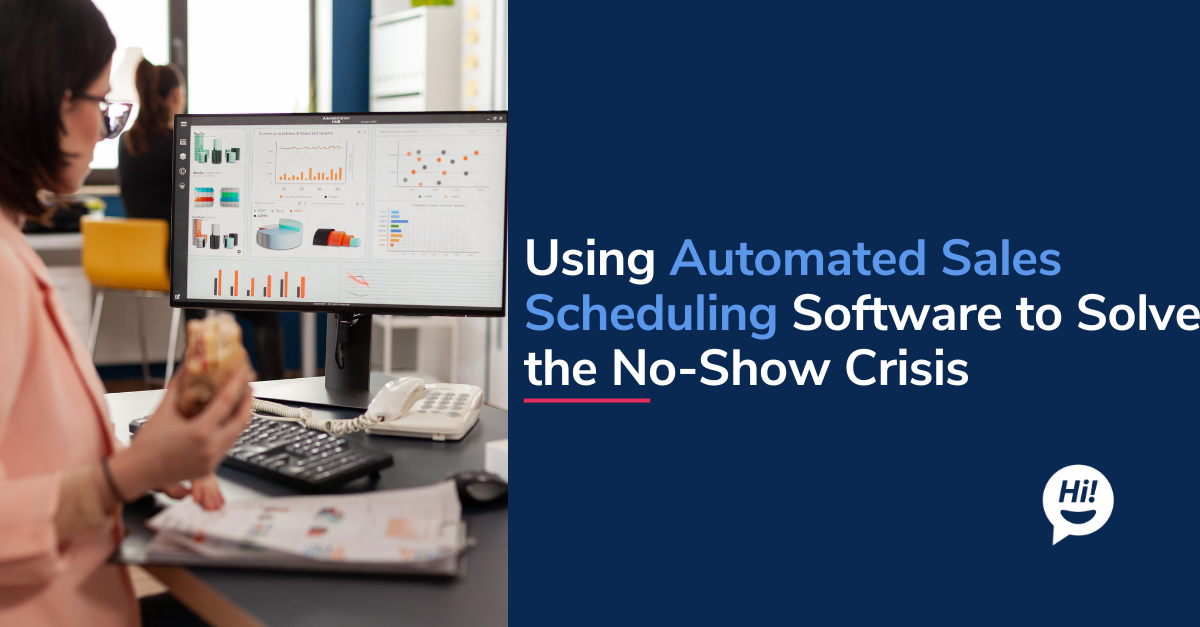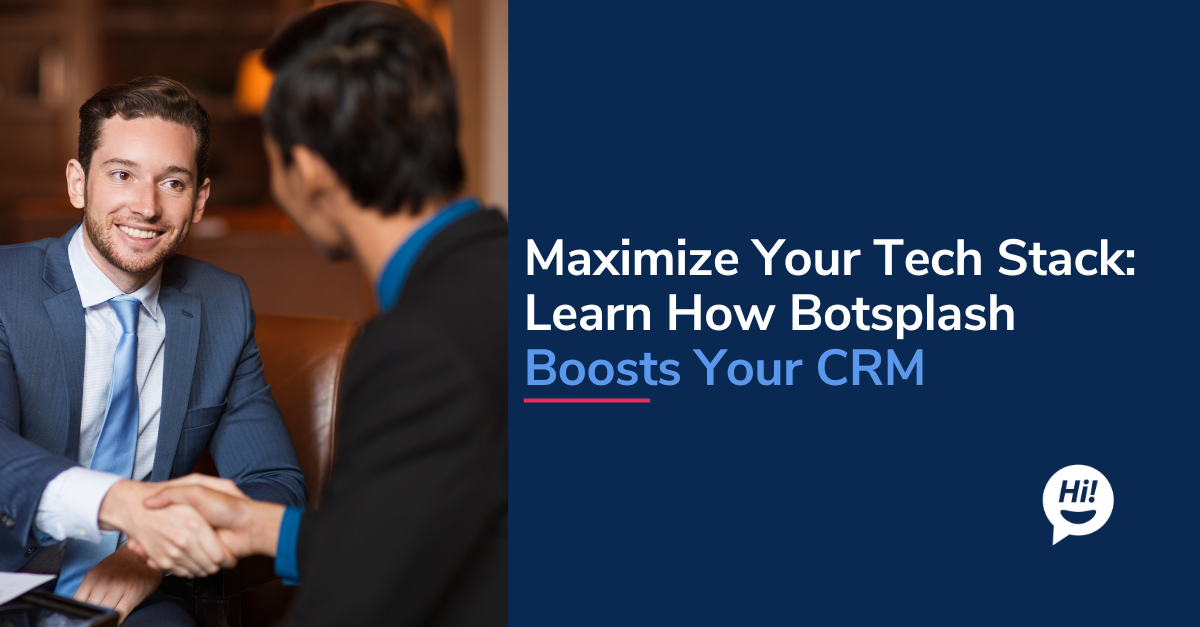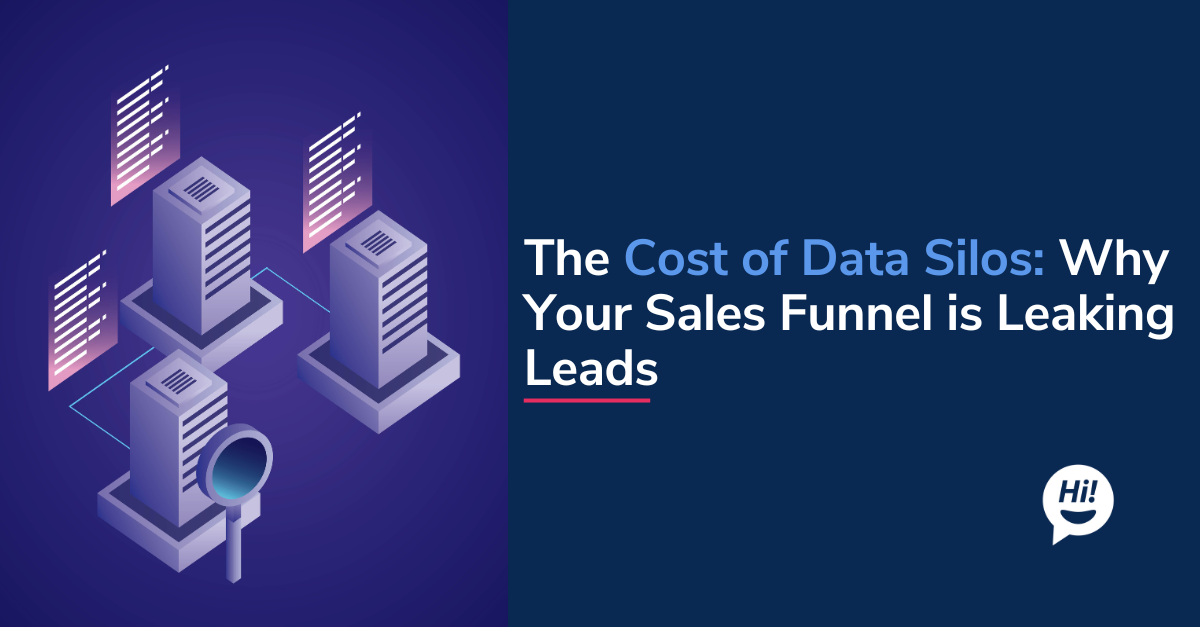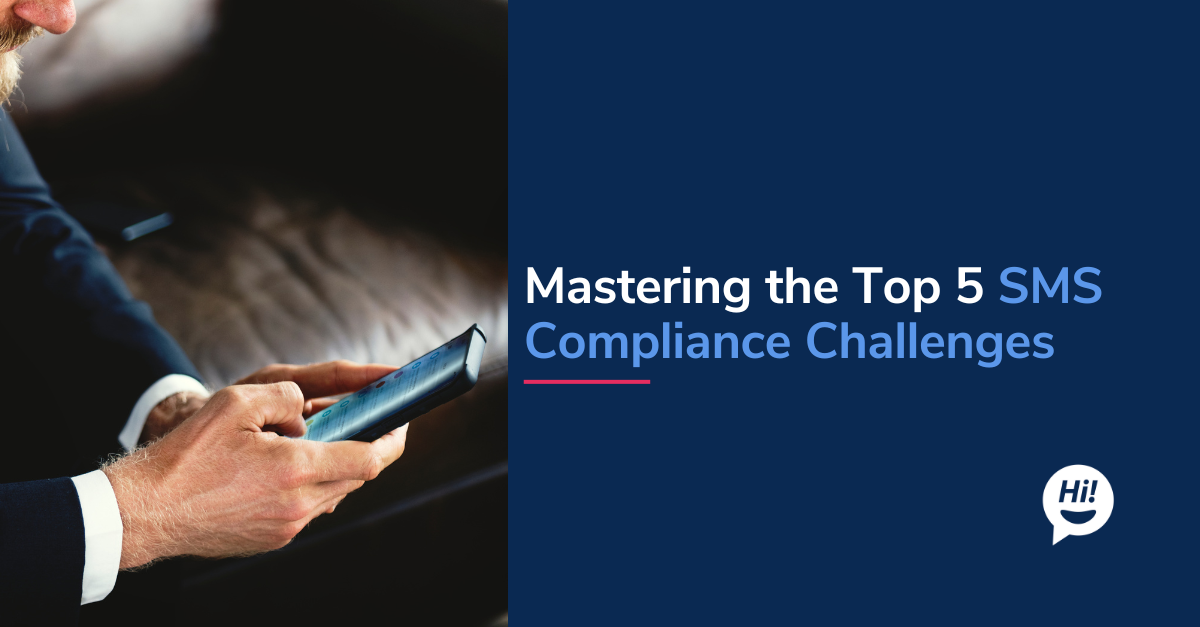Conversational AI has been largely confined to the support desk, celebrated primarily as a tool for cutting costs by deflecting customer inquiries. But this perspective vastly underestimates its true potential. While streamlining operations and reducing support expenses are undeniable benefits, they represent only a fraction of the story. Modern Conversational AI is rapidly evolving into a pivotal force for transforming not just service, but the entire customer journey, directly influencing sales and marketing outcomes.
This blog will explore how intelligent Conversational AI, by engaging customers dynamically and at scale, is a powerful engine for achieving tangible revenue growth across the entire customer lifecycle, from initial lead generation to valuable post-sale opportunities.
Why Sales & Marketing Need Conversational AI
For too long, sales and marketing teams have grappled with persistent challenges within traditional customer funnels. These include painfully slow lead response times, leading to lost opportunities as prospects move on. There's also the constant struggle with missed opportunities for timely engagement and generic nurturing campaigns that fail to resonate with individual prospects. In a world saturated with information, a "one-size-fits-all" approach simply doesn't cut through the noise.
Meanwhile, customer expectations have fundamentally shifted. Today's consumers demand immediate, personalized interactions at every stage of their journey, whether they're just researching a product or ready to make a purchase. They expect brands to know them, understand their context, and respond instantly on their preferred channel. Traditional methods, often relying on manual follow-ups or static web forms, simply cannot provide this level of responsiveness and personalization at scale.
This is precisely where Conversational AI presents an immense opportunity. It fills these critical gaps by transforming static, one-way communications into dynamic, two-way dialogues. This technology allows businesses to engage prospects and customers at scale, around the clock, with messages that are not only immediate but also highly relevant and tailored. It signals a powerful shift from a human-only sales process to human-AI augmented processes, where AI empowers sales and marketing teams to work smarter, convert faster, and truly scale their efforts in a way that was previously unimaginable.
How Conversational AI Influences the Revenue Funnel
To understand how Conversational AI revenue growth is achieved, it's crucial to grasp the fundamental mechanisms through which this technology influences every stage of the revenue funnel. It's about more than just automating chats; it's about optimizing interactions for sales.
- 24/7 Engagement & Responsiveness: In today's global, always-on marketplace, sales opportunities don't adhere to business hours. Conversational AI ensures your business is always available, providing 24/7 engagement and instant responsiveness. This means no missed leads due to time zone differences or after-hours inquiries. Prospects can get their questions answered immediately, keeping them engaged in the buying process rather than moving on to a competitor.
- Scalability for High Volume: Marketing campaigns can generate a deluge of inquiries, and sales teams can easily become overwhelmed. Conversational AI offers unparalleled scalability for high volume, capable of handling thousands of simultaneous conversations without compromising quality. This ensures every interested prospect receives prompt attention, regardless of the inbound query load, preventing potential leads from falling through the cracks simply due to capacity issues.
- Personalization at Scale: Generic messages rarely convert. Conversational AI excels at personalization at scale by leveraging advanced Natural Language Processing (NLP) and Machine Learning (ML). It can analyze user intent, preferences, and historical data (when integrated with a CRM) to tailor conversational flows and deliver highly relevant messages, product recommendations, and offers. This makes each interaction feel unique and relevant to the individual, significantly increasing the likelihood of conversion.
- Data Collection & Insights: Every interaction managed by AI is a rich source of data. From initial queries and expressed preferences to common objections and successful sales paths, it provides invaluable data collection and insights. This qualitative data can then be analyzed to identify trends, optimize sales scripts, refine marketing messages, and pinpoint new product opportunities, directly informing strategies for sustained revenue growth.
- Seamless Integration: For Conversational AI to truly drive revenue, it must operate within your existing ecosystem. Its ability to achieve seamless integration with CRMs, marketing automation platforms, and other sales tools is critical. This ensures that valuable lead data is instantly captured, sales representatives have full context before engaging, and the entire customer journey is unified, preventing data silos that hinder efficient sales processes.
Key Strategies for Conversational AI Revenue Growth
Understanding the core mechanisms is just the beginning. To achieve tangible revenue growth, businesses must implement specific, actionable strategies across the entire customer lifecycle.
Strategy 1: Enhanced Lead Generation & Qualification
Conversational AI transforms how leads are captured and processed. It can automate initial lead capture on your website, social media channels, and even paid ad campaigns by engaging visitors instantly. AI-driven chatbots are adept at pre-qualifying leads through targeted, intelligent questions, asking about budget, needs, timelines, and authority. This identifies high-intent prospects and screens out less serious inquiries. The system can then perform intelligent routing of these qualified leads directly to the right sales agent, ensuring prompt follow-up with full context, preventing delays that often lead to lost opportunities.
Strategy 2: Accelerating the Sales Process
Conversational AI acts as a continuous accelerator within the sales funnel. It can provide instant answers to product or service FAQs, effectively overcoming pre-purchase objections in real-time, anytime. Beyond just answering questions, AI can guide customers through product discovery or configuration, helping them find the perfect solution or build a customized quote. It can even schedule demos or appointments directly within the conversation, syncing with sales reps' calendars. For instances of hesitation, automated, personalized reminders can be sent for abandoned carts or incomplete sales processes, nudging prospects towards conversion.
Strategy 3: Boosting Upselling & Cross-selling
The revenue opportunity doesn't end with the initial sale. Conversational AI excels at upselling and cross-selling by leveraging its analytical capabilities. AI can analyze existing customer data and conversational cues from previous interactions to identify opportune moments for relevant product recommendations. It can proactively offer upgrades or complementary services based on a customer's purchase history, usage patterns, or expressed needs. This includes personalized outreach for loyalty programs, exclusive offers for add-ons, or suggestions for premium features, maximizing the value of each customer relationship.
Strategy 4: Improving Customer Retention & Lifetime Value
Retained customers are the most profitable. While often associated with support, Conversational AI contributes significantly to retention and Customer Lifetime Value (CLTV). It enables proactive post-purchase engagement, offering onboarding tips, usage guides, and timely support to ensure customer satisfaction from the outset. AI can identify churn risks from conversational data (e.g., expressions of frustration, repeated issues) and trigger re-engagement campaigns. Happy, well-supported customers are more likely to repurchase, subscribe to higher tiers, and become valuable referrers, directly contributing to long-term Conversational AI revenue growth.
Quantifying Conversational AI Revenue Growth
To truly prove the value of your Conversational AI investment, merely tracking support cost reductions isn't enough. A comprehensive approach is required to quantify its impact on revenue growth across sales and marketing. This means looking at a blend of direct financial metrics and operational improvements that contribute to the bottom line.
- Key Sales & Marketing Metrics:
- Lead Conversion Rates: Track the percentage of initial inquiries (from AI-driven channels) that convert into qualified leads, and subsequently, how many qualified leads convert into actual sales. Compare these rates for AI-assisted vs. non-AI channels.
- Average Order Value (AOV) and Customer Lifetime Value (CLTV) Increases: Measure if Conversational AI-driven recommendations or proactive upsell/cross-sell initiatives lead to higher transaction values or longer customer relationships.
- Reduced Sales Cycle Length: Assess if Conversational AI expedites the journey from initial contact to closed-won deals by providing instant information and guiding prospects efficiently.
- Upsell/Cross-sell Conversion Rates: Specifically track the success rate of AI-driven recommendations for additional products or services.
- Marketing Campaign ROI: Analyze how AI-powered lead qualification and nurturing improve the overall return on investment for your marketing spend.
- Operational Metrics (Contributing to Revenue): While not direct revenue, these metrics signify efficiencies that free up resources for sales.
- Reduced Cost Per Lead (CPL): If AI is efficiently pre-qualifying leads, the cost to acquire a truly qualified lead should decrease.
- Increased Sales Productivity: Measure the amount of time human sales representatives save by not handling unqualified leads or answering basic FAQs, allowing them to focus on high-value closing activities.
- Faster Response Times to Leads: Track how quickly AI can engage and qualify new inquiries compared to manual processes.
- Leveraging Analytics Dashboards: The power of Conversational AI revenue growth measurement lies in unified analytics. Ensure your AI platform integrates seamlessly with your CRM, marketing automation, and sales platforms. This integration provides comprehensive dashboards that offer a holistic view of the customer journey, allowing you to see exactly how AI impacts leads, conversions, and revenue at every touchpoint. These insights are crucial for identifying bottlenecks, optimizing strategies, and continuously demonstrating your AI's financial impact.
Best Practices for Maximizing Conversational AI Revenue Growth
To truly unlock the full potential of Conversational AI revenue growth, simply deploying the technology isn't enough. Strategic implementation and ongoing refinement are crucial.
- Align AI with Specific Revenue Goals: Don't just implement Conversational AI for generic efficiency. Clearly define what specific revenue objectives you want it to achieve. Is it reducing sales cycle length by 15%? Increasing cross-sell conversion by 10%? Boosting lead qualification rates? Clear goals drive targeted AI design and measurable outcomes.
- Seamless CRM Integration is Non-Negotiable: For personalization and efficient handoffs, your Conversational AI must be deeply integrated with your Customer Relationship Management (CRM) system. This ensures that AI has access to complete customer profiles for tailored interactions, and that valuable lead and sales data is instantly synchronized, providing your human sales reps with full context.
- Embrace Human-AI Collaboration, Don't Just Automate: The most successful implementations empower sales representatives with AI insights and tools, rather than attempting to replace them. Use Conversational AI for lead qualification, instant FAQs, and drafting initial responses. This frees up human reps to focus on building relationships, negotiating, and closing complex deals, directly contributing to more efficient revenue growth.
- Continuous Optimization is Key: Conversational AI models and strategies are not "set it and forget it." Regularly analyze conversational data to identify what's working and what's not. Refine AI scripts, adjust lead qualification questions, and A/B test different conversational flows to continuously improve conversion rates and engagement. This iterative process is vital for maximizing long-term revenue impact.
- Focus on Value Exchange, Not Just Pitches: While driving sales, ensure your AI offers genuine help, provides useful information, or streamlines a process for the customer. Overly aggressive or pushy AI can alienate prospects. By focusing on providing real value through conversations, the sales naturally follow, building trust and fostering more sustainable Conversational AI revenue growth.
Conclusion
In summary, Conversational AI is far more than just a tool for support efficiency. It is a powerful, often underestimated, engine for achieving significant revenue growth across the entire customer lifecycle. By transforming every interaction into a personalized, timely, and data-driven opportunity, it redefines how businesses generate leads, accelerate sales, boost cross-selling, and cultivate enduring customer loyalty.
Embrace its ability to provide 24/7 engagement, scale interactions, and deliver precise personalization. When strategically implemented and viewed with a holistic approach to ROI, Conversational AI can unlock new revenue streams and drive remarkable business expansion. It’s time to move beyond seeing AI solely as a support tool and fully embrace its potential to revolutionize your sales and marketing efforts, achieving true Conversational AI revenue growth.
Reach out to us and see what AI solutions you can explore for your business growth. Schedule a demo of our platform today!
To learn more about Botsplash click the button below to schedule a demo with our team.










